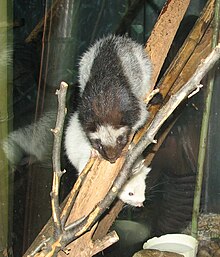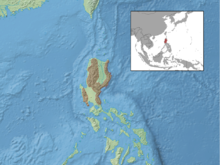| Northern Luzon giant cloud rat | |
|---|---|
 | |
| Scientific classification | |
| Domain: | Eukaryota |
| Kingdom: | Animalia |
| Phylum: | Chordata |
| Class: | Mammalia |
| Order: | Rodentia |
| Family: | Muridae |
| Genus: | Phloeomys |
| Species: | P. pallidus |
| Binomial name | |
| Phloeomys pallidus Nehring, 1890 | |
 | |
The northern Luzon giant cloud rat (Phloeomys pallidus) or northern Luzon slender-tailed cloud rat, also known as bu-ot in Filipino, is a large species of rodent in the family Muridae. It is only found in Luzon, the Philippines. [1] [2] [3]

